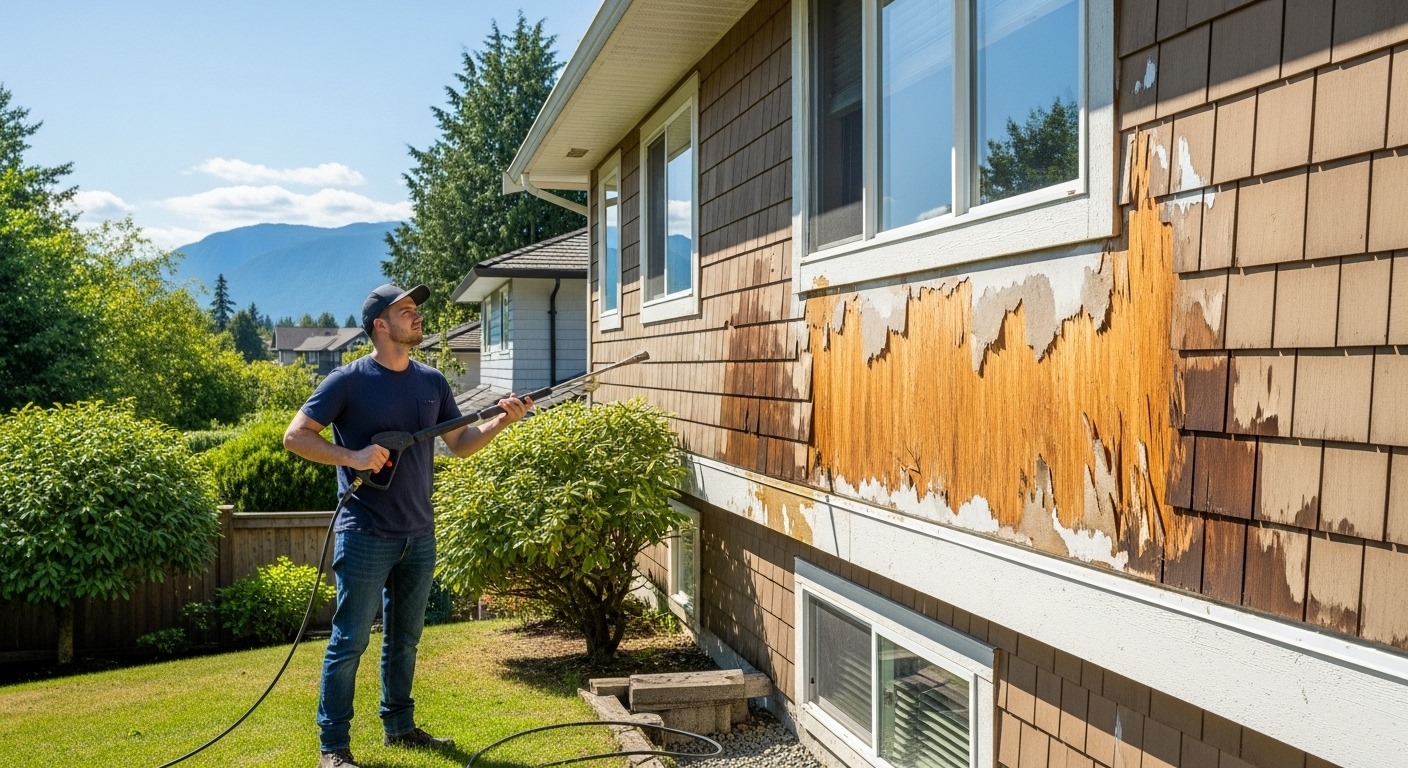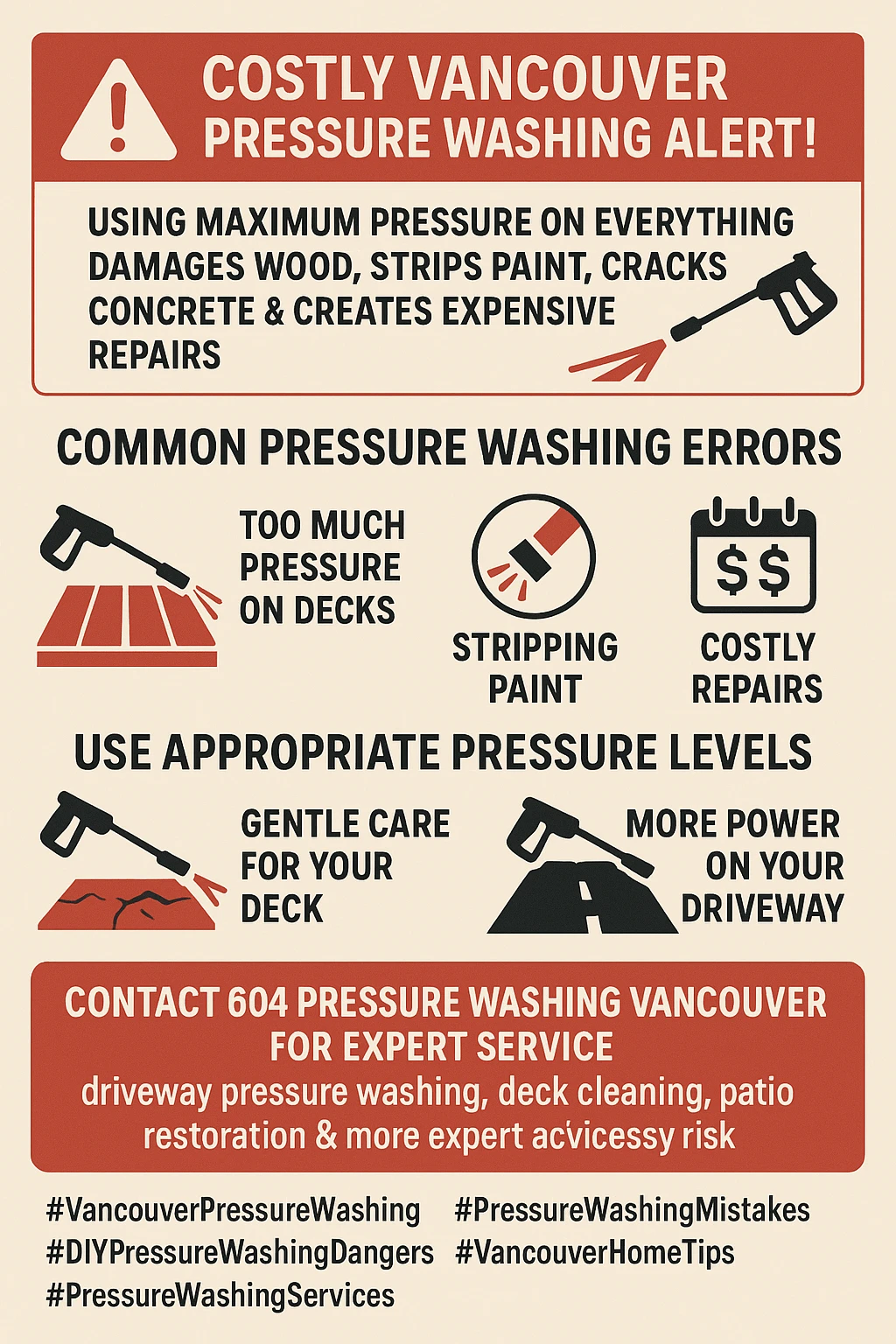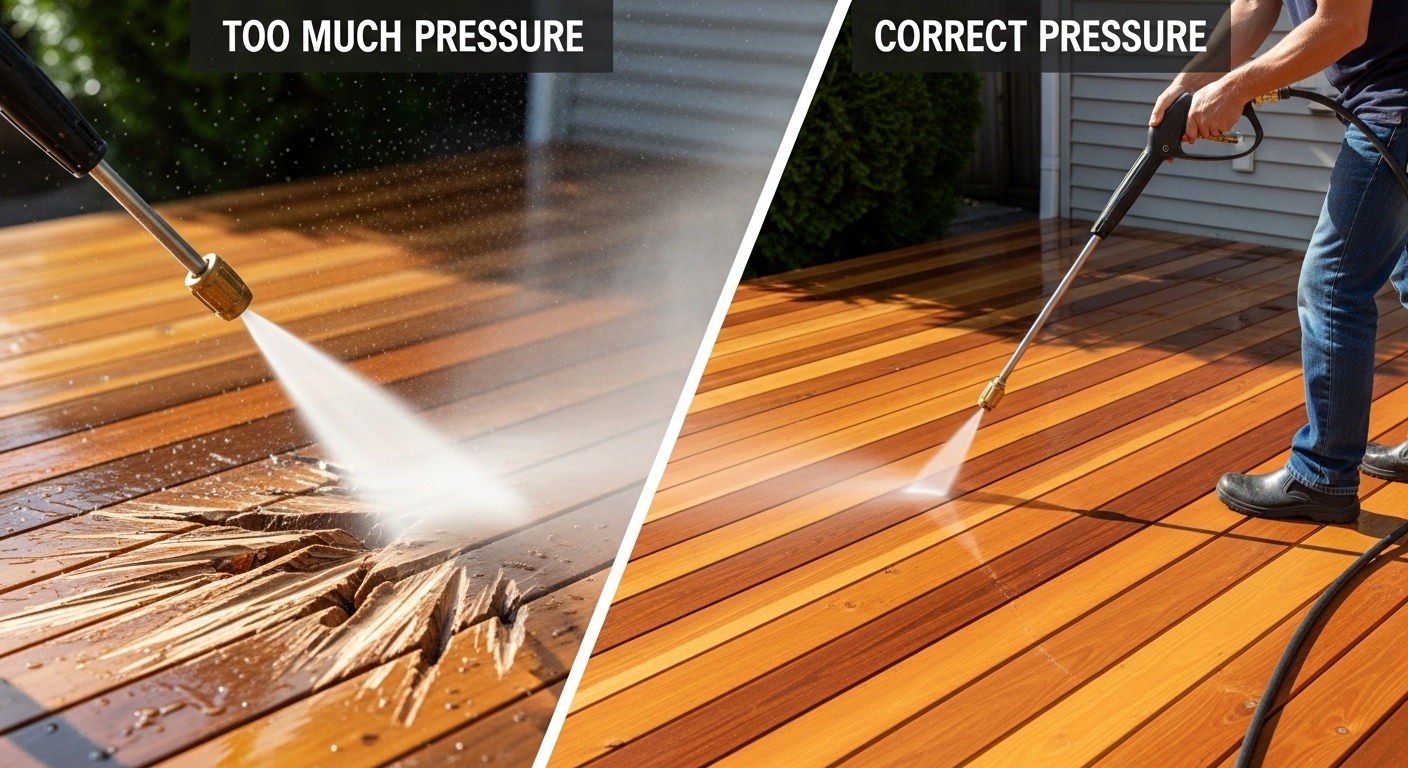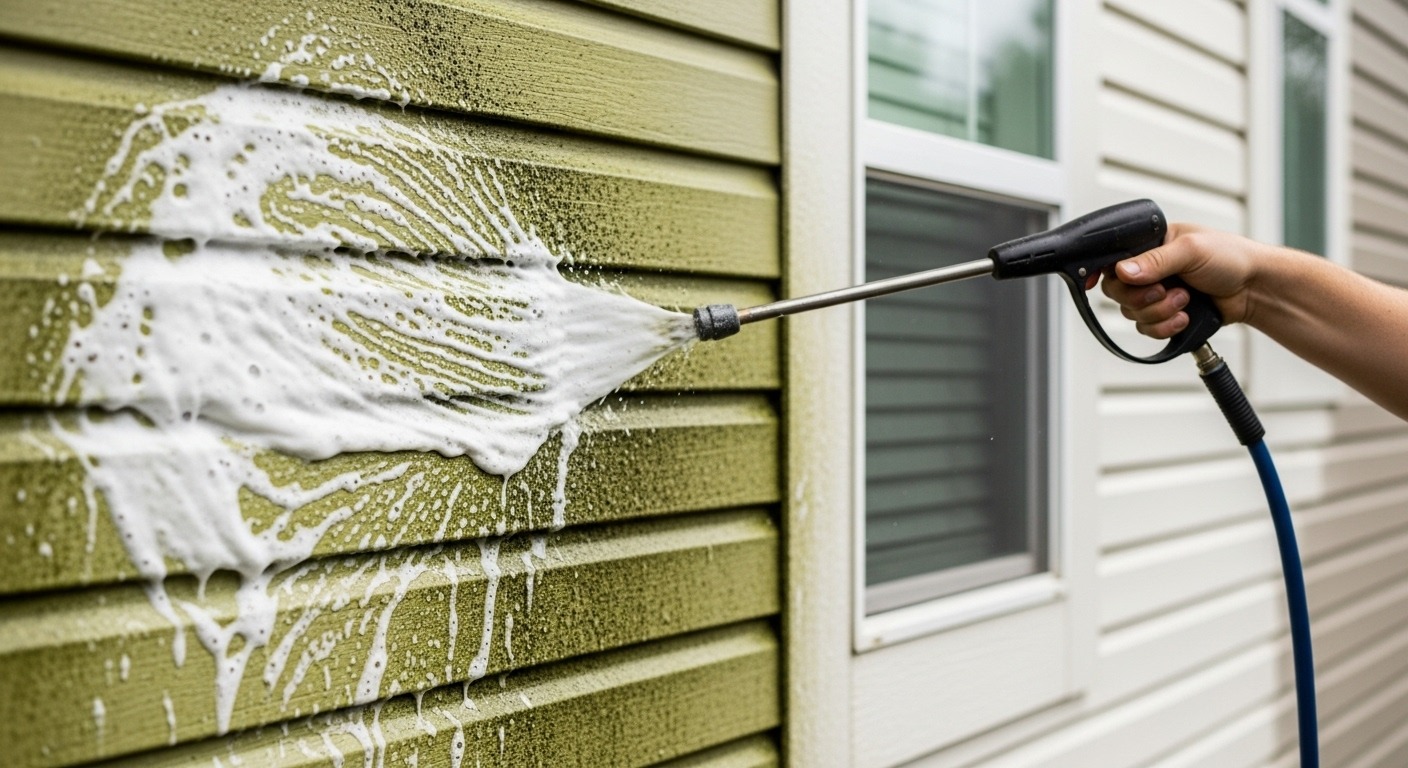Why Vancouver Homeowners Are Making This Costly Pressure Washing Mistake (And How to Avoid Destroying Your Property)
Wondering why that DIY pressure washing project left you with damaged siding and a hefty repair bill? You’re not alone – Vancouver homeowners are making critical mistakes that turn a simple cleaning task into a property destruction nightmare, but the good news is these costly errors are completely avoidable.
Picture this: it’s a beautiful Vancouver weekend, and you’ve decided to tackle that grimy deck or moss-covered driveway with a rented pressure washer. The machine roars to life, water blasts out with satisfying force, and for a moment, you feel like a cleaning superhero. But then reality hits – you’ve just stripped the paint off your siding, gouged your cedar deck, or worse, forced water behind your home’s exterior walls where it’s now quietly breeding mold.

This scenario plays out across Vancouver neighborhoods every weekend, costing homeowners thousands in repairs. The problem isn’t that pressure washing is inherently dangerous – it’s that our unique coastal climate, expansive clay soils, and abundance of cedar construction create specific challenges that generic online tutorials simply don’t address. From the humidity that accelerates mold growth to the freeze-thaw cycles that make concrete vulnerable, Vancouver properties need specialized care.
Understanding these regional factors and common pitfalls can save you from joining the ranks of homeowners who learned expensive lessons the hard way. Let’s dive into the most critical mistakes Vancouver homeowners make and how to avoid them, protecting both your property and your wallet in the process.
Key Outtakes:
- Using excessive PSI settings strips paint, splinters wood, and can shatter windows – different materials require vastly different pressure levels
- Vancouver’s humid climate creates ideal conditions for mold and algae that require specialized soft washing techniques, not brute force
- Improper spray angles force water behind siding, creating hidden moisture problems that lead to structural damage and mold growth
- Our region’s clay soils cause concrete movement that makes proper pressure washing maintenance critical for preventing costly cracks
- Cedar siding, common in Vancouver homes, demands ultra-low pressure settings and eco-friendly detergents to avoid permanent damage

The Pressure Problem: Why More PSI Doesn’t Mean Better Results
Here’s where most Vancouver DIY enthusiasts go spectacularly wrong – they assume that cranking up the pressure will blast away years of Pacific Northwest grime more effectively. This couldn’t be further from the truth, and it’s the single most expensive mistake you can make. Think of pressure washing like performing surgery with a chainsaw when you need a scalpel. The right tool with the right technique beats raw power every single time.
When you rent a pressure washer from your local hardware store, you’re often getting a machine capable of 3,000 PSI or more. That’s enough force to strip bark off trees, etch concrete, and turn your beautiful cedar siding into a splintered mess. Most residential surfaces in Vancouver – from vinyl siding to composite decks – require no more than 1,200 to 1,500 PSI for effective cleaning. The difference between appropriate pressure and excessive pressure is the difference between restoration and destruction.

The material composition of your home matters enormously in Vancouver’s market. Our houses feature everything from heritage cedar shingles to modern composite materials, and each demands a completely different approach. Concrete driveways can handle higher pressure settings, but the moment you move to your wooden deck or painted trim, you need to dial things way back. Professional pressure washers understand these nuances and adjust their equipment accordingly, while DIY enthusiasts often use one setting for everything.
Testing is absolutely critical before you commit to cleaning an entire surface. Find an inconspicuous area – maybe behind a shrub or in a corner that’s not highly visible – and start with the lowest pressure setting your machine offers. Gradually increase pressure only if needed, watching carefully for any signs of surface damage. If you see paint flaking, wood fibers separating, or any kind of etching or scoring, you’ve already gone too far.
The economics of this mistake are sobering. Replacing damaged siding can cost $8,000 to $15,000 for an average Vancouver home. Refinishing a stripped deck runs $3,000 to $6,000. Compare that to the $200 to $400 cost of hiring a professional pressure washing service, and the choice becomes crystal clear. The few hundred dollars you might save by doing it yourself pale in comparison to the thousands you could lose through inexperience.
Vancouver’s Climate Challenge: Humidity, Mold, and the Soft Washing Solution
Living in Vancouver means dealing with nature’s perfect storm for organic growth – mild temperatures, high humidity, and plenty of rainfall create ideal conditions for mold, mildew, algae, and moss. This isn’t just an aesthetic issue; these organisms actively damage your home’s surfaces while creating health hazards for your family. Understanding how to properly address these growths is where many homeowners make their second critical mistake.
Traditional high-pressure washing actually makes mold and algae problems worse in our climate. When you blast these organisms with intense water pressure, you’re essentially fragmenting them and spreading spores across a wider area. Within weeks, you’ll notice the growth returning with a vengeance because you’ve just given it more surface area to colonize. It’s like trying to kill weeds by chopping them up with a lawnmower – you end up multiplying your problem instead of solving it.
Soft washing represents the professional standard for dealing with Vancouver’s organic growth challenges. This technique combines low-pressure water application with specialized cleaning solutions that actually kill mold, mildew, and algae at the root level. The chemicals used in professional soft washing are biodegradable and specifically formulated to break down organic matter without damaging your home’s surfaces or surrounding landscaping.

The science behind soft washing is fascinating and directly relevant to our coastal environment. The cleaning solutions contain surfactants that help penetrate the protective barriers these organisms create, along with biocides that eliminate them completely. Unlike high-pressure washing, which only removes surface growth, soft washing creates an inhospitable environment that prevents regrowth for months longer than traditional pressure washing.
For Vancouver homeowners, this translates to real economic benefits. Professional soft washing typically lasts 4-6 times longer than DIY pressure washing in our climate. That means fewer cleanings per year and significantly less wear and tear on your home’s surfaces. The upfront cost of professional soft washing pays for itself through reduced maintenance frequency and prevention of the accelerated deterioration that comes from repeated high-pressure treatments.
The Hidden Danger of Water Ingress
Perhaps the most insidious mistake Vancouver homeowners make is creating water intrusion problems that won’t become apparent for months or even years. This happens when improper pressure washing techniques force water behind siding, into wall cavities, or into areas where moisture simply doesn’t belong. By the time you discover the problem, you’re looking at extensive structural repairs and potential health hazards from hidden mold growth.
The physics of how water moves is crucial to understanding this problem. Your home’s exterior is designed as a drainage system where water flows downward and outward, away from the structure. Siding, whether it’s vinyl, cedar, or fiber cement, is installed in overlapping layers that channel water down and off the building. When you pressure wash upward or at the wrong angle, you’re fighting against this natural drainage system and literally forcing water where it was never meant to go.
Vancouver’s construction styles make this particularly problematic. Many of our homes feature cedar siding with natural expansion gaps, or older vinyl installations that weren’t sealed with modern techniques. High-pressure water can easily slip behind these surfaces, where it sits against house wrap, insulation, and structural elements. In our humid climate, this trapped moisture becomes a breeding ground for mold that can spread throughout wall cavities before you ever see surface signs.
Professional pressure washers use specialized techniques to prevent water intrusion. They understand how to read your home’s construction and adjust their spray patterns accordingly. This includes using downward spray angles, maintaining appropriate distances from the surface, and recognizing when certain areas should be avoided entirely. They also use extension wands and other equipment that allows them to clean effectively without compromising safety or structural integrity.
The long-term consequences of water intrusion can be devastating. Hidden mold not only damages your home’s structure but can create serious health problems for your family. Remediation costs often exceed $10,000, and in severe cases, entire walls may need to be rebuilt. Insurance companies are also becoming increasingly strict about covering damage that results from improper maintenance, meaning you

